When you live in Korea you’ll often hear there are four seasons. Honestly speaking summer and winter are the primary seasons as spring and fall are rather short. As there isn’t enough happening in fall to make a dedicated page on that season, we are skipping that season for this website at the current time.
Spring is a very comfortable season, which leaves little content to be written about this time of year. However, dust and pine pollen are worth mentioning, both for cleaning and respiratory concerns. 황사 (黃沙/黃砂, hwangsa) translates into Asian dust, yellow dust, and a handful of similar terms. These particles originate from deserts in China, Mongolia, and Kazakhstan and can travel hundreds of miles to land in both Koreas, Japan, eastern Russia and sometimes all the way over to North America. Desert dust comes primarily in the spring.
While desertification is a significant element, industrialization has also become a contributing factor to the changing of air quality, leading the term of choice to change into fine dust or particulate matter (미세먼지, 微細먼지, misemeonji). As the issue is changing and has become highly political, we won’t be able to go into details here. Wikipedia has very extensive articles on both Asian dust and particulates and we suggest you follow various news sources to get more up-to-date information. If you want to see a map with air quality for the entire country, the website World Air Quality Index is very detailed and has a number of city-specific pages.
Another related concern in the springtime is pine pollen (송화가루, 松花가루, songhwagaru). Yellow in color, it is very visible and will coat everything if you leave your windows open. Keep an ear out for when the season starts and ends as this information can save you a lot of grief when it is time to clean your home. People that are allergic to pollen, either tree or flower, often say they have a flower allergy (꽃 알러지, kkon alleoji). Getting a mask will help with your allergy during this dusty season. If you visit a pharmacy (약국, 藥局, yakguk) you can get a mask for fine dust (미세먼지 마스크, 微細먼지 마스크, misemeonji maseukeu) or Asian dust (황사 마스크, 黃沙/黃砂 마스크, hwangsa maseukeu) but either should help with pollen as well.
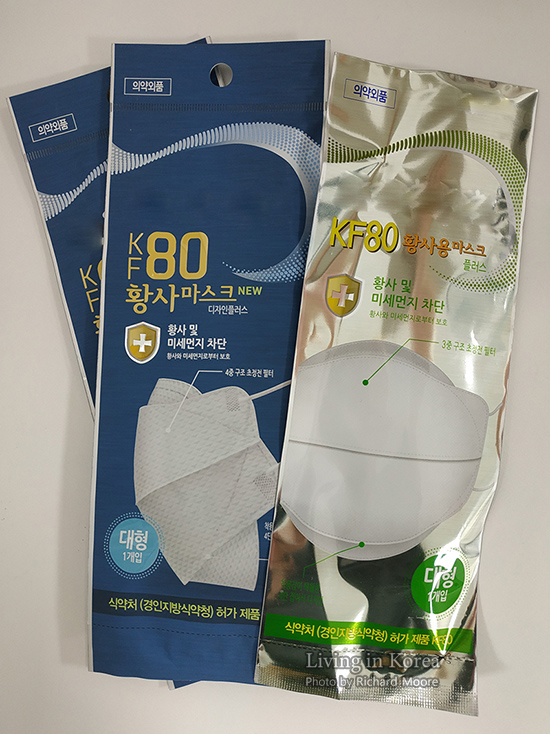
If you have a car, it will give your vehicle a slight yellow tinge until cleaned. While this is annoying, it isn’t sticky and is therefore rather easy to clean. Make sure your wipers (와이퍼, waipeo) are in good condition for clearing the windshield and try to get a carwash (세차, 洗車, secha).
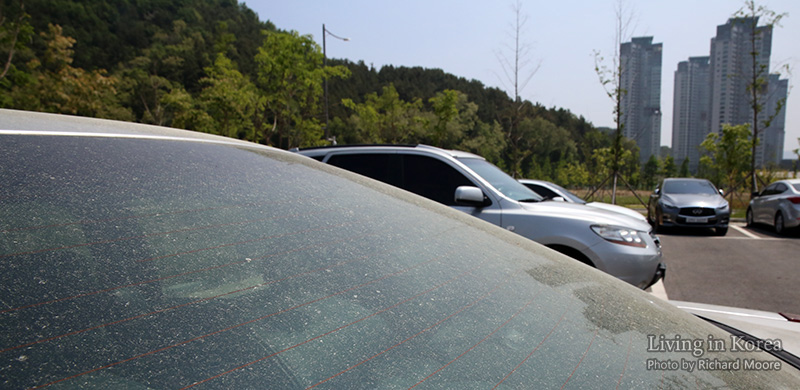
Regardless if your home gets coated in pollen, it is good to have some cleaning supplies. Kitchen cleaning rags (행주, haengju) are normally white and usually 30 cm x 30 cm or 30 cm x 40 cm. 종이 타월 롤 (jongi tawol rol) are paper towels on a roll. 키친타월 (kichintawol) can also refer to paper towels on a roll, or can come in a box that resembles tissue paper. This is an easy mistake as the packaging looks very similar but the term in Korean and their softness/thickness are different. Wet wipes, baby wipes, or moist towelettes are all 물티슈 (multisyu) in Korean and are readily available in a number of stores. If you want to wipe the floor with a mop (물걸레, 대걸레, 청소대, mulgeolle, daegeolle, cheongsodae) you can use it with a rag or with a single-use wet cloth (청소포, cheongsopo). If you purchase the single use wet cloth, make sure you get the same brand and correct size otherwise you won’t be able to use it. Also using standard wet wipes is difficult as they are thinner and tend to slip out.
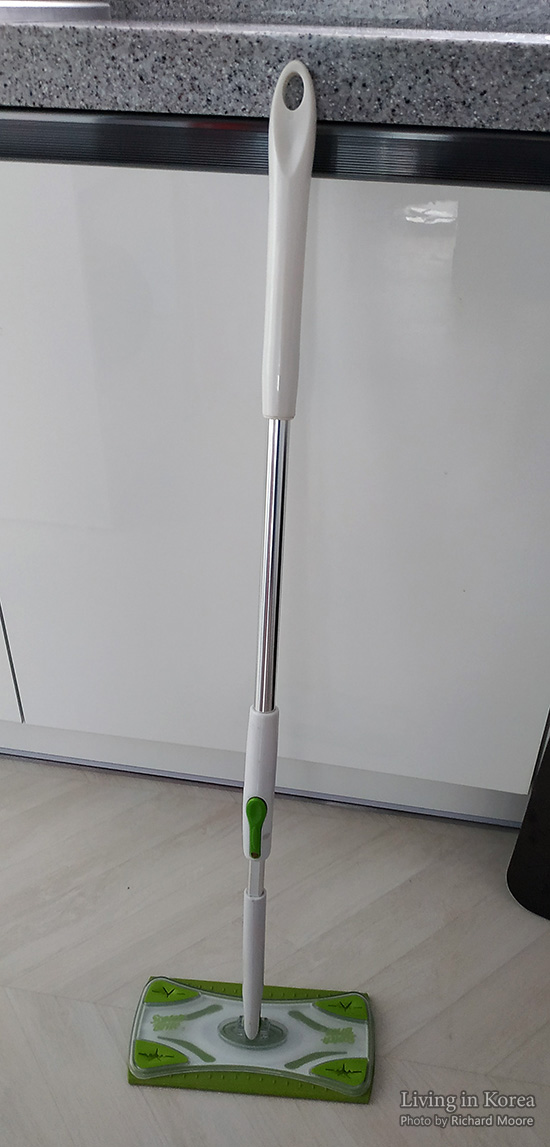
The saying April showers can be true some years. Rain starts in spring but usually isn’t very hard until summer. As rain starts in this season, and as the summer season is rather long, let’s mention rain here. If you are out and about when it starts raining you’ll want to cover up with an umbrella (우산, 雨傘, usan). If you don’t have one then look for a convenience store or a number of other stores as venders like to bring out their umbrella stock when it starts to rain – supply and demand.
When you are going inside a building or a subway station, it’s best not to bring in all the water from your umbrella as it makes the floors slippery. Security or people working the information desk at these places will frequently bring out a plastic bag dispensing machine for you to put your umbrella into.
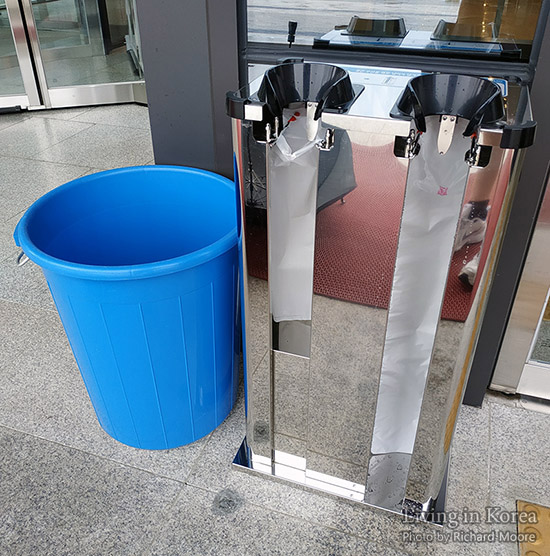
As there are two standard sizes for umbrellas there are two standard sizes of plastic bags to put your wet umbrella into. Looking at the bags themselves we can see the right ones are longer than the left. But there is also a size guide on top, just in case. If you want to read the words more easily, click here to see a larger size of this image.
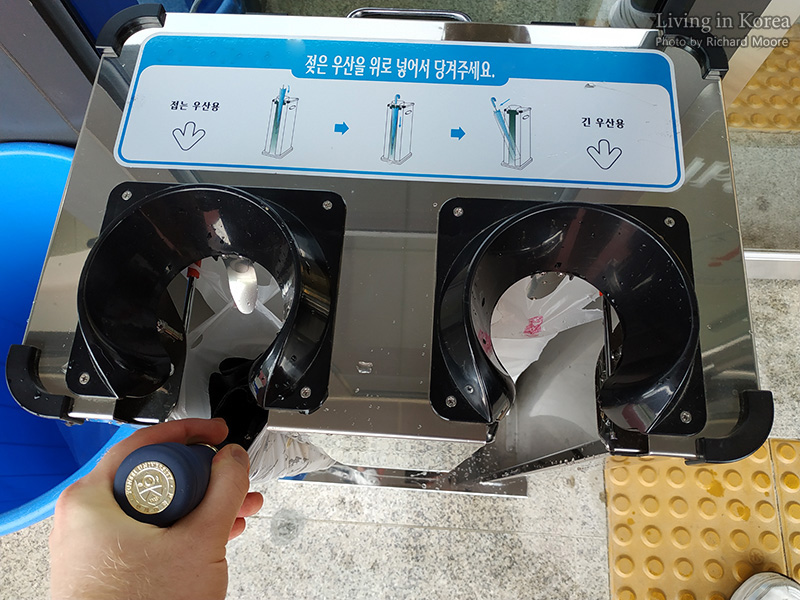
Close your umbrellas and select the correct size, slide it in, pull, and no more dripping. When you exit the building there is a trash can which quickly gets filled with wet plastic bags on truly rainy days. But while you are inside you shouldn’t be dripping anywhere. This works good for short periods of time, but if you are going to work and it will stay wet for the entire day, it is best to find a space where you can open it up to dry it out.
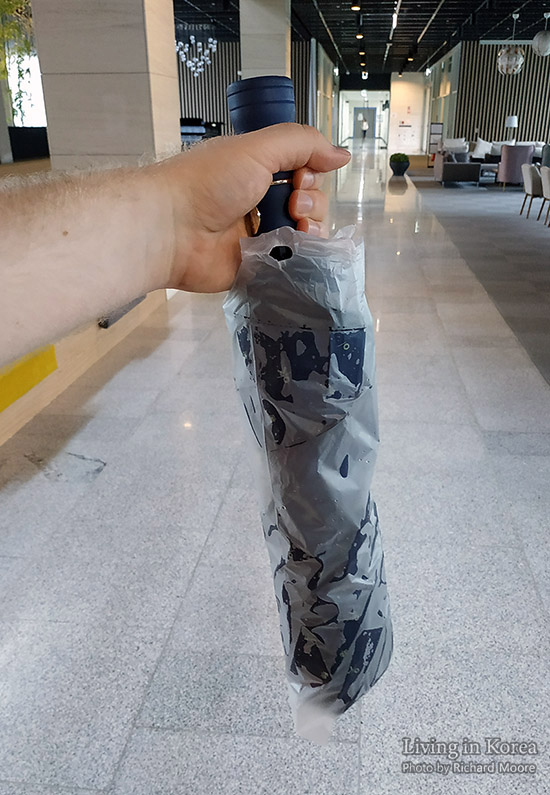
As there is more social pressure to recycle, and these bags get used for very short periods of time, there are several designs of equipment to quickly dry umbrellas without needing bags. Here is one seen near the entrance to a convention center. Close your umbrella, slide it through, and it should be dry enough that water no longer drips off.
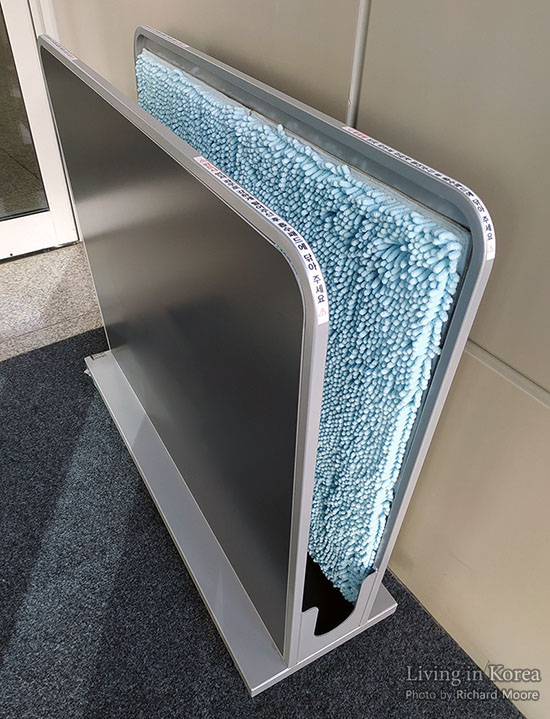
Same basic design with slight differences. Wheels are located on the bottom so it can be wheeled out when the rain starts. Found in a performing arts and concert center in Seoul.
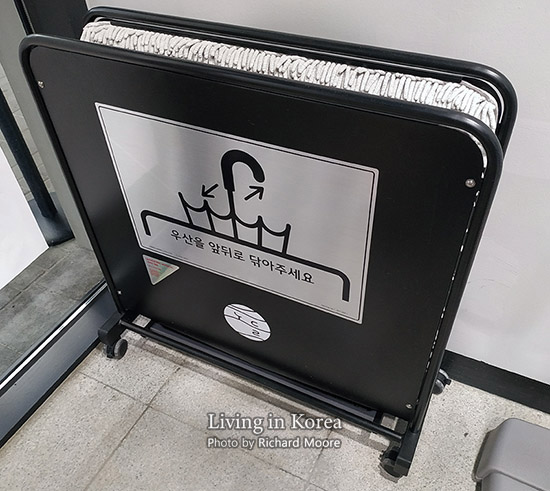
Here are instructions seen on a similar umbrella drying unit in a coffee shop. As these are still fairly uncommon, the public might be unfamiliar with how to use them.
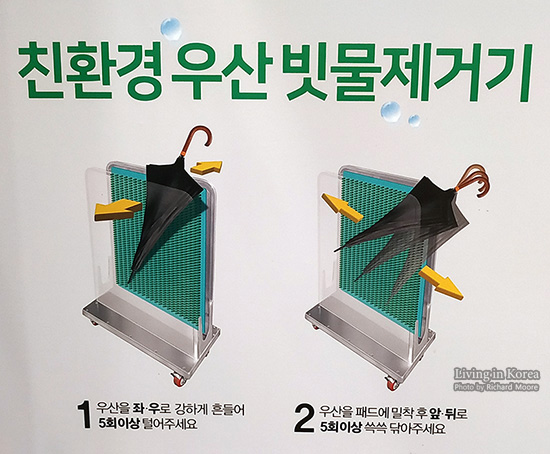
If you were planning to take a taxi only to find out it is raining, it will be significantly more difficult to find an available taxi as everyone now has that same idea. Either leave a bit earlier or consider taking another mode of transport.